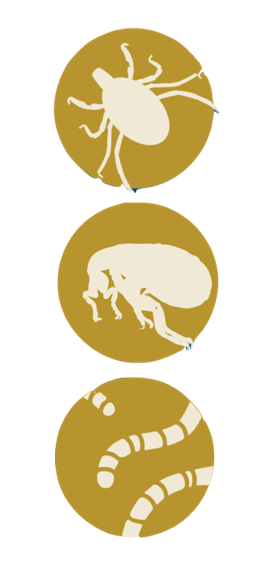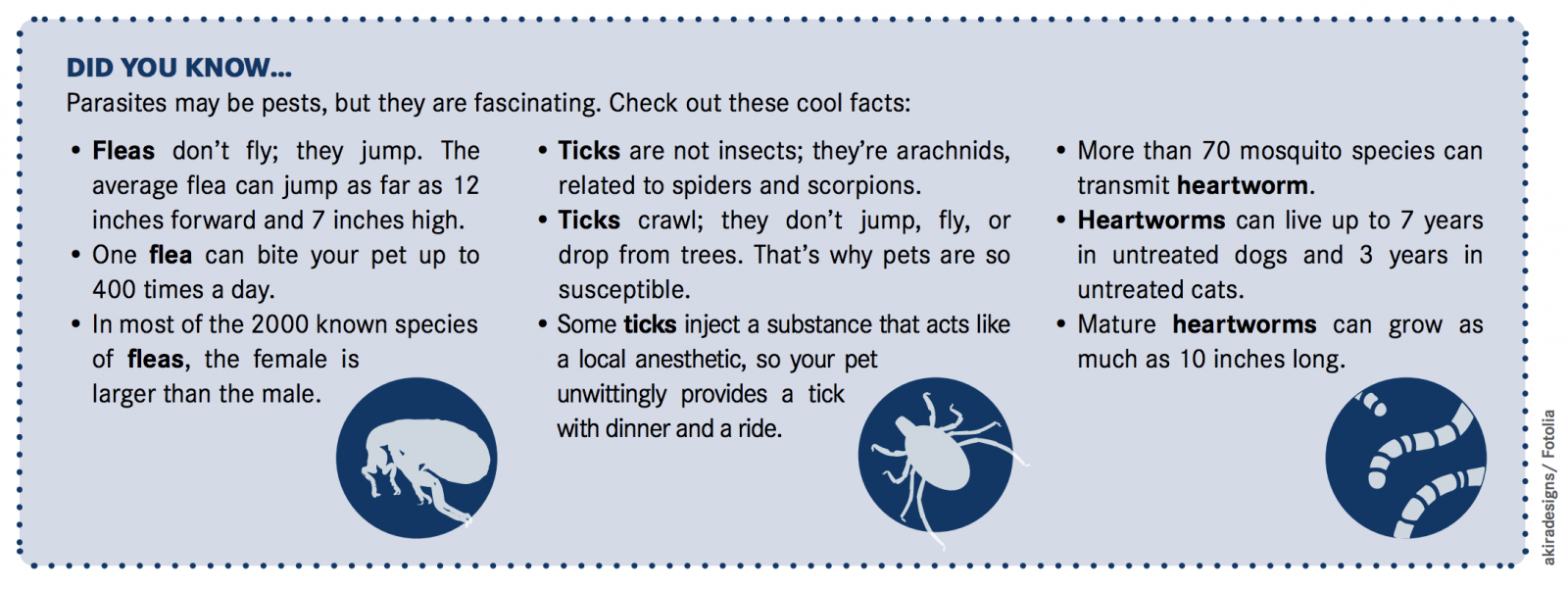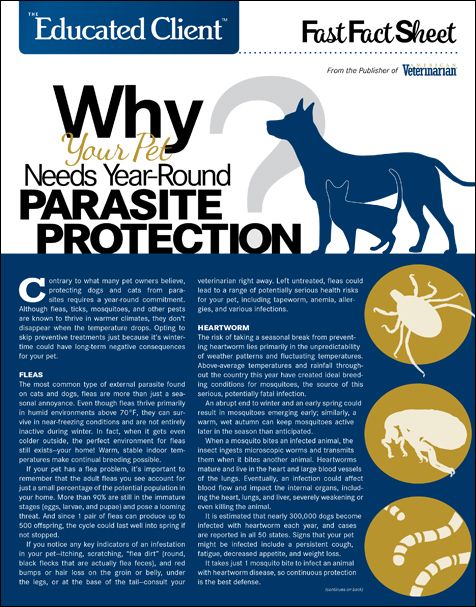The Educated Client: Why Your Pet Needs Year-Round Protection
Contrary to what many pet owners believe, protecting dogs and cats from parasites requires a year-round commitment.
Contrary to what many pet owners believe, protecting dogs and cats from parasites requires a year-round commitment. Although fleas, ticks, mosquitoes, and other pests are known to thrive in warmer climates, they don’t disappear when the temperature drops. Opting to skip preventive treatments just because it’s wintertime could have long-term negative consequences for your pet.
Fleas
The most common type of external parasite found on cats and dogs, fleas are more than just a seasonal annoyance.
Even though fleas thrive primarily in humid environments above 70°F, they can survive in near-freezing conditions and are not entirely inactive during winter. In fact, when it gets even colder outside, the perfect environment for fleas still exists—your home! Warm, stable indoor temperatures make continual breeding possible.
If your pet has a flea problem, it’s important to remember that the adult fleas you see account for just a small percentage of the potential population in your home. More than 90% are still in the immature stages (eggs, larvae, and pupae) and pose a looming threat. And since 1 pair of fleas can produce up to 500 offspring, the cycle could last well into spring if not stopped.
If you notice any key indicators of an infestation in your pet—itching, scratching, “flea dirt” (round, black flecks that are actually flea feces), and red bumps or hair loss on the groin or belly, under the legs, or at the base of the tail—consult your veterinarian right away. Left untreated, fleas could lead to a range of potentially serious health risks for your pet, including tapeworm, anemia, allergies, and various infections.

Heartworm
The risk of taking a seasonal break from preventing heartworm lies primarily in the unpredictability of weather patterns and fluctuating temperatures. Above-average temperatures and rainfall throughout the country this year have created ideal breeding conditions for mosquitoes, the source of this serious, potentially fatal infection.
An abrupt end to winter and an early spring could result in mosquitoes emerging early; similarly, a warm, wet autumn can keep mosquitoes active later in the season than anticipated.
When a mosquito bites an infected animal, the insect ingests microscopic worms and transmits them when it bites another animal. Heartworms mature and live in the heart and large blood vessels of the lungs. Eventually, an infection could affect blood flow and impact the internal organs, including the heart, lungs, and liver, severely weakening or even killing the animal.
It is estimated that nearly 300,000 dogs become infected with heartworm each year, and cases are reported in all 50 states. Signs that your pet might be infected include a persistent cough, fatigue, decreased appetite, and weight loss.
It takes just 1 mosquito bite to infect an animal with heartworm disease, so continuous protection is the best defense.
Ticks
Turns out, tiny ticks are mighty resourceful. Rather than dying off in the winter, they seek shelter among fallen leaves in the wooded areas they normally inhabit. At the first sign of milder weather, ticks may emerge in search of a meal—and your pet could become an unwitting host. Some disease-carrying species of ticks stay active as long as the climate remains above freezing and isn’t too icy or wet.
Ticks latch on to pets (and people) by burrowing into the skin, producing a gluelike substance to stay attached and feeding on their hosts’ blood for days. Without regular prevention, it can be hard to stop a tick from attaching to an animal. It’s important to realize that your pet may encounter ticks outside the woods, too. They can be found in tall grass, under accumulated leaves, and around woodpiles. Because dogs walk low to the ground, they are especially vulnerable to ticks latching on as they walk through areas such as these.
In addition to Lyme disease, a variety of other tick-transmitted diseases and infections could harm your pet. Depending on the types of ticks found in your area, your pet could be susceptible to the dangers of hepatozoonosis, an often-fatal disease that causes muscle loss; tularemia, which can cause high fever and swollen lymph nodes in cats and dogs; and tick paralysis, which affects the nervous system.
Better Safe Than Sorry
Regardless of whether you think your pet is likely to come in contact with one of these pests, it’s crucial that you provide yearround parasite prevention for every pet in your home. Some parasite preventives combat multiple types, and all the products are easy to administer.

Many parasite preventives are given just once monthly, so make it a habit to give your pet’s medication on the same day each month. Mark it on your calendar—many products come with bright stickers—or set an electronic reminder. Skipping doses intentionally during winter months will get you out of the habit and make it more likely that your pet goes unprotected for far too long.
We can help you determine the best type of preventive for your pet. And if you have any questions about preventive care, please ask. We are happy to advise you about the most effective products for your pet and your situation, as well as discuss other common pests in the area that might pose a risk to your pet.
The potential dangers of stopping or skipping preventive medication during winter aren’t worth the risk—especially when your pet’s health is on the line.
Click here for all American Veterinarian® client education materials.
